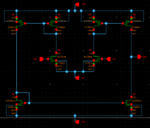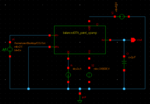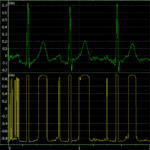ehsanaiman
Junior Member level 2
- Joined
- Sep 17, 2017
- Messages
- 22
- Helped
- 0
- Reputation
- 0
- Reaction score
- 0
- Trophy points
- 1
- Location
- Batu Pahat
- Activity points
- 185
Hello, Im simulating symmetrical OTA/ 3 current mirror OTA as shown in figure below.

The testbench as shown in figure below.

The circuit powered up by +/- 0.9V voltage source and the current source is 2uA. For the input, I use vpwlf which I can put ECG waveform input from MIT database.
But the output of ECG waveform as shown in figure below is not in the same shape of the input. Of course, this OTA should be amplify the ECG signal but I dont know why the shape also changed. Can anyone check this and help me?


The testbench as shown in figure below.

The circuit powered up by +/- 0.9V voltage source and the current source is 2uA. For the input, I use vpwlf which I can put ECG waveform input from MIT database.
But the output of ECG waveform as shown in figure below is not in the same shape of the input. Of course, this OTA should be amplify the ECG signal but I dont know why the shape also changed. Can anyone check this and help me?
